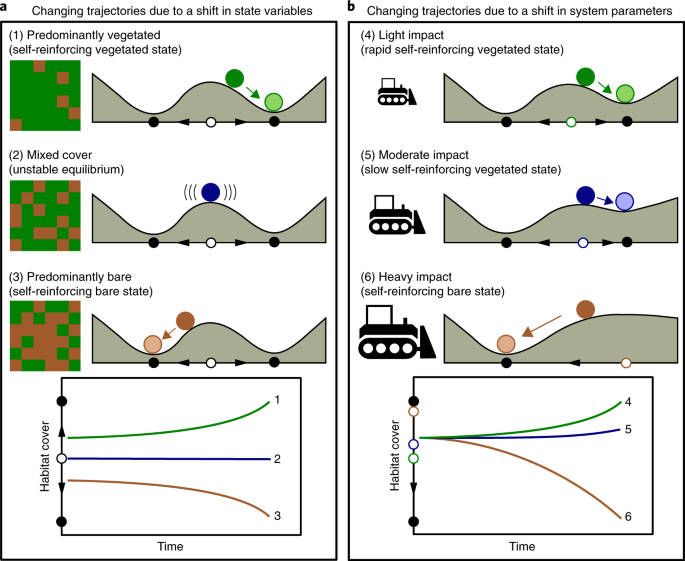As the off-season approaches, it’s important to give your trusty lawn mower the care it deserves. Regular maintenance not only ensures its optimal performance but also extends its lifespan. In this article, we will explore essential lawn mower maintenance tips for the off-season, providing you with valuable insights on how to keep your mower in top shape during the months it’s not in use. So, let’s dive in and discover the key steps to keeping your mower ready for the next season!
Drain the Fuel System
Subheading 1
Draining the fuel system is an important step to prevent clogs and damage to your lawn mower during the off-season. When gasoline sits idle for a long time, it can become stale and cause problems. To drain the fuel system, start by turning off the engine and allowing it to cool down. Locate the fuel shut-off valve or fuel line on your mower and close it. This will prevent any fuel from flowing into the engine. Next, remove the fuel cap and place a drain pan beneath the fuel tank. Carefully tilt the mower to pour the remaining fuel into the drain pan. Make sure to dispose of the old fuel properly.
Subheading 2
After draining the fuel tank, it’s essential to prevent any remaining fuel from causing issues in the carburetor or fuel lines. To ensure a thorough fuel system flush, you can start the engine and allow it to run until it shuts off due to lack of fuel. This will consume any remaining fuel in the line, leaving the system empty. By performing this simple maintenance step, you’re safeguarding your lawn mower against potential fuel-related problems during the off-season.
Clean and Remove Debris
Subheading 1
Cleaning and removing debris from your lawn mower is vital for its proper functioning and longevity. Over time, grass clippings, dirt, and other debris can accumulate on the mower deck, blade, and undercarriage, causing rust, clogs, and even damage to the cutting mechanism. To clean your mower, start by disconnecting the spark plug wire to prevent accidental starting. Then, using a brush or a scraper, gently remove any grass clippings or debris from the mower deck and undercarriage.
Subheading 2
Once the built-up debris is removed, it’s time to give your mower a thorough cleaning. Fill a bucket with warm water and mild detergent, and dip a sponge or cloth into the solution. Use the sponge or cloth to wipe down the entire surface of the mower, including the handles, wheels, and blades. Be careful when cleaning the blade; ensure the engine is off and the spark plug wire is disconnected. Avoid using excessive water as it can damage sensitive parts, especially electrical components. Finally, rinse the mower with clean water and allow it to dry completely before storing or using it again.
Inspect and Replace Spark Plug
Subheading 1
The spark plug is a crucial component of your lawn mower’s engine, responsible for igniting the fuel-air mixture that powers the machine. Over time, spark plugs can become fouled with carbon deposits, which can hinder their performance and lead to starting issues. Inspecting the spark plug during the off-season is a maintenance task that shouldn’t be overlooked. To inspect the spark plug, start by disconnecting the spark plug wire. Then, using a spark plug wrench, remove the plug from the cylinder head.
Subheading 2
Once the spark plug is removed, inspect its condition. Look for signs of fouling, such as black soot or deposits. If the spark plug appears dirty or worn, it’s best to replace it with a new one. Check your lawn mower’s manual or consult with a professional to ensure you’re using the correct type and gap setting for the spark plug. Installing a new spark plug can greatly improve the starting and overall performance of your lawn mower, ensuring it’s ready for the upcoming mowing season.
Change the Oil
Subheading 1
Changing the oil in your lawn mower is an essential maintenance task that should be performed regularly, including during the off-season. Fresh oil helps lubricate the engine, reduce friction, and remove any accumulated dirt or debris. To change the oil, start by running the engine for a few minutes to warm it up. This will make the oil flow more freely, making the draining process easier. Once the engine is warm, locate the oil drain plug or valve beneath the mower deck.
Subheading 2
Using a wrench or the designated tool, carefully loosen the drain plug and direct the oil into a suitable container. Allow the oil to completely drain out before replacing the drain plug. Once the old oil is drained, refill the engine with the recommended type and amount of fresh oil. Be sure to check your mower’s manual for the appropriate oil specifications. After refilling the oil, check the oil level using the dipstick and adjust if necessary. Changing the oil regularly will keep your lawn mower’s engine running smoothly and extend its lifespan.
Sharpen and Balance the Blade
Subheading 1
A sharp and balanced mower blade is essential for a clean and efficient cut. Dull or unbalanced blades can tear the grass instead of cleanly cutting it, leading to an uneven lawn appearance and potential damage to the grass. To sharpen the blade, start by disconnecting the spark plug wire and wearing protective gloves. Remove the blade from the mower deck using a wrench or the recommended tool provided by the manufacturer.
Subheading 2
Once the blade is detached, inspect it for any noticeable damage or excessive wear. If the blade is bent or cracked, it’s best to replace it with a new one. If the blade is in good condition, use a grinding wheel or a sharpening stone to restore its sharpness. Follow the blade’s original cutting angle, and sharpen each edge evenly. After sharpening, ensure the blade is balanced to prevent vibrations that can damage the mower. This can be done by using a blade balancer or checking the blade’s balance on a level surface. Maintaining a sharp and balanced blade will result in a well-manicured lawn and a healthier overall cut.
Check and Adjust Belt Tension
Subheading 1
Belt-driven lawn mowers require properly adjusted belt tension to ensure smooth operation and power transmission. Over time, belts can stretch or wear out, leading to decreased performance and even belt slippage. To check the belt tension, start by locating the belt cover or access point on your mower. Carefully remove the cover and examine the belt for signs of excessive wear, cracking, or damage.
Subheading 2
Using the appropriate tool, adjust the tension of the belt according to your mower’s specifications. In general, the belt should have enough tension to prevent slipping while still allowing smooth rotation of the pulleys. Refer to your lawn mower’s manual or consult with a professional for precise tension adjustment instructions. Regularly checking and adjusting the belt tension will maintain optimal power transfer, ensuring your mower operates at its best.
Clean or Replace Air Filter
Subheading 1
The air filter in your lawn mower plays a critical role in preventing dirt, dust, and debris from entering the engine. A clogged or dirty air filter can restrict airflow, leading to poor engine performance and fuel efficiency. To clean the air filter, start by locating the air filter housing on your mower. Remove the cover or housing and carefully take out the air filter.
Subheading 2
Inspect the air filter for any signs of dirt or debris buildup. If the filter is dirty, gently tap it against a hard surface to remove loose debris. Avoid using compressed air, as it can damage the filter. If the air filter is excessively dirty or damaged, it’s best to replace it with a new one. Consult your mower’s manual or a professional for the appropriate air filter replacement. A clean and properly functioning air filter will keep your engine running smoothly and prevent unnecessary wear and tear.
Store in a Dry, Protected Area
Subheading 1
Proper storage during the off-season is crucial to ensure your lawn mower stays in good condition. Exposure to moisture, extreme temperatures, and other environmental factors can cause rust, corrosion, and damage to sensitive components. When storing your mower, choose a dry and protected area such as a garage or shed. If you don’t have access to an indoor storage space, consider using a quality mower cover to protect it from the elements.
Subheading 2
Before storing your lawn mower, give it one final cleaning to remove any remaining dirt or debris. Ensure all components, such as the blades and undercarriage, are dry to prevent moisture buildup. It’s also a good idea to apply a light coat of lubricant to metal surfaces to prevent rust. Finally, engage the parking brake and securely store the lawn mower, ideally in an upright position to save space. By properly storing your mower, you’ll prolong its lifespan and be ready for the next mowing season.
Inspect and Adjust Wheel Bearings
Subheading 1
The wheel bearings on your lawn mower allow smooth movement and rotation of the wheels. Over time, these bearings can become worn or damaged, leading to wheel wobbling or difficulty in maneuverability. To inspect the wheel bearings, start by lifting each wheel off the ground, either by using a jack or manually tilting the mower.
Subheading 2
Once the wheels are off the ground, grasp each wheel and check for excessive play or resistance when rotating. If you notice any looseness or roughness, it’s time to adjust or replace the wheel bearings. Depending on your mower’s design, you may need to consult the manual or seek professional assistance to perform the adjustment or replacement. Well-maintained wheel bearings ensure smooth operation and enhance the overall performance of your lawn mower.
Check and Tighten Fasteners
Subheading 1
Regularly checking and tightening the fasteners on your lawn mower is a simple yet crucial maintenance task. Vibrations and the constant operation of the machine can cause bolts, screws, and other fasteners to become loose over time. Loose fasteners can lead to unnecessary rattling, misalignments, and even damage to the mower’s components. To check and tighten the fasteners, start by inspecting all visible parts, including the handles, blades, and engine housing.
Subheading 2
Using the appropriate tools, tighten any loose fasteners you come across. It’s important not to overtighten, as it can damage the surrounding parts or strip threads. Check your mower’s manual for specific torque settings and guidance if needed. By regularly checking and tightening the fasteners, you’ll ensure your lawn mower remains secure and safe during operation.
In conclusion, proper lawn mower maintenance during the off-season is essential to keep your machine performing at its best. By following these maintenance tips, including draining the fuel system, cleaning and removing debris, inspecting and replacing the spark plug, changing the oil, sharpening and balancing the blade, checking and adjusting belt tension, cleaning or replacing the air filter, storing in a dry and protected area, inspecting and adjusting wheel bearings, and checking and tightening fasteners, you’ll prolong the lifespan of your lawn mower and ensure a beautifully manicured lawn when the mowing season returns. Remember to consult your mower’s manual or seek professional assistance for specific guidance and to use the appropriate tools and safety precautions throughout the maintenance process. With proper care, your lawn mower will be ready to tackle the next mowing season with ease. Happy mowing!





